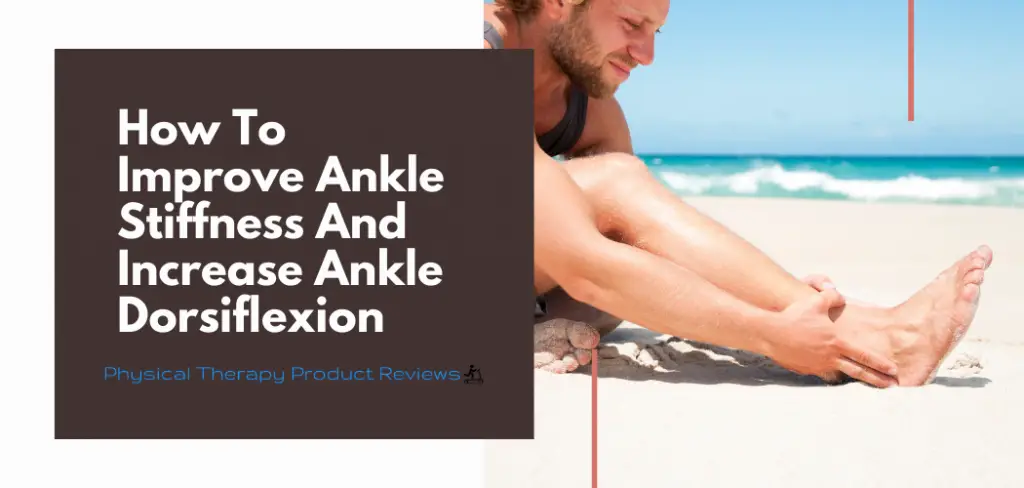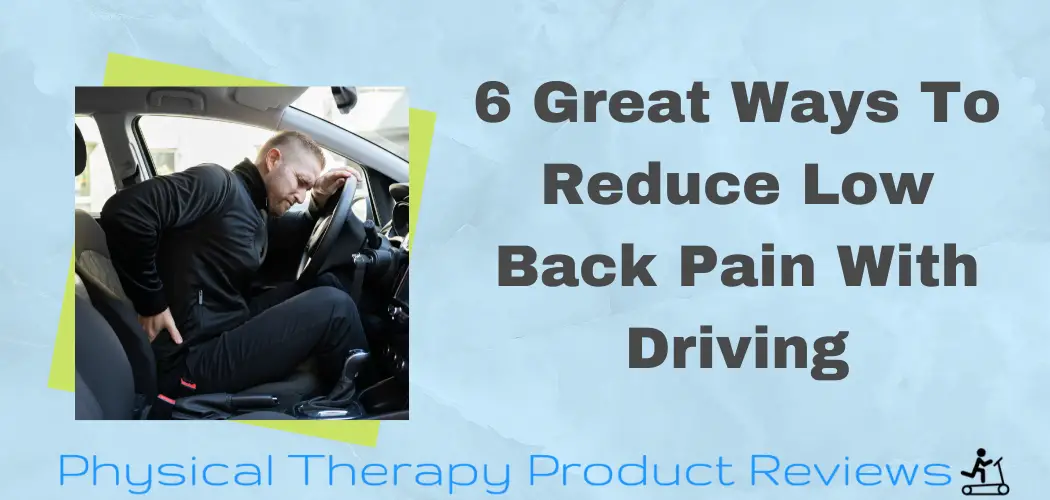 Ankle stiffness is a common problem that often doesn’t get seem to noticed until the stiffness starts to impact daily activities or it’s affecting recovery after surgery.
Ankle stiffness is a common problem that often doesn’t get seem to noticed until the stiffness starts to impact daily activities or it’s affecting recovery after surgery.
Most people never realize how stiff their ankles have become until it’s progressed to a point of pain or limited ability. Limited ankle dorsiflexion (bending the ankle up towards the shin) can cause falls, difficulty with stairs, pain in other joints due to compensations, and uneven wear and tear on other parts of the body.
Improving ankle range of motion can be frustrating if you are unsure of how to progress.
What Are The Most Common Causes of Ankle Stiffness?
There are many different causes of ankle stiffness including being sedentary, sustaining an injury, or just general stiffening of the joint over time. The 3 most common causes of ankle stiffness are listed below and the stiffness can be a combination of all 3 reasons at times.
Muscle and Soft Tissue Tightness
Muscle tightness is common with non-use and after surgery. Most typically it affects all sides of the ankle and foot but is usually most noticeable on the backside of the ankle in the calf and Achilles region.
Ankle Joint Restrictions
Joint restrictions are most common after an injury, surgery, or general wear tear over the years. Swelling and non-use can cause the joint to tighten up. This may be felt like a “pinch” in the front of the ankle when trying to bend the foot up to the shit. This can also cause a tightness on both sides of the ankle near the malleoli or behind the ankle bones.
Ankle Capsular Tightness
Capsular tightness can be caused by non-use, after injuries, and especially after surgery. The ligaments that surround the ankle tighten up after an acute bout of increased swelling. This swelling and inflammatory response can lead to non-use and tightening of the ligaments around the ankle.
Common Foot and Ankle Injuries That May Cause Stiffness
There are many different ways that the ankle can be become injured. An ankle injury may difficult to deal with as it is a weight-bearing joint and a primary joint used in walking. Some of the most common ankle injuries include:
- Ankle sprains
- Muscle strains
- Achilles tendonitis
- Plantar Fasciitis
- Flat feet and high arches foot pain
How to Test for Normal Ankle Mobility
The easiest way to see if you have stiff ankles is to compare it to the other side. To do this we like to use the Knee to Wall Test
- Start by kneeling close to a wall with the affected leg in front.
- Hold your heel down to the ground with one hand and lean forward trying to touch the knee to the wall.
- Normal is 5 inches or about 12.5 cm which you can measure with a a tape measure.
- Compare it to the other side to see what limitations may exist.

Exercise to Help Decreases Stiffness and Help with Ankle Mobility
Foam Roll Your Calf First and Decrease Muscle Guarding
We like to start with foam rolling to help improve ankle stiffness for two main reasons, increased blow flow and a decrease in pain.
Improvement in Local Blood Flow
The improvement in local blood flow helps muscle and tendons become more elastic or tolerant to stretching. This allows us to get a more range of motion with the exercises to follow. Foam rolling also helps warm up the ankle joint and “lubricate” the joint for easier movement.
Temporary Decrease in Pain
Foam rolling compresses and numbs the pain receptors in the skin and muscles. When you foam roll near the ankle, such as the calf muscle, it temporarily shuts off or pauses the pain receptors. Again, this lets you stretch and push you range of motion further.
What Foam Rolling Does Not Due
Foam rolling does not length, stretch, or pull any muscles that are tight. You can see our post on Myths and Truths of Foam Rolling Here.
Despite consistent advice to foam roll right muscles to lengthen them this has not been proven in science. Foam rolling acts on the nervous system and does not cause any length changes to the muscle.

Standing Gastroc and Soleus Stretch – The Easy Ankle Stretches
The Gastrocnemius and the Soleus muscles comprise the backside of the lower leg. These two muscles attach to the backside of the heel through the Achilles tendon. These two muscles represent the most common muscle and soft tissue limitation for ankle range of motion.
To stretch these two muscles is fairly simple and both are similar in form. It’s best to stretch both of these muscles in standing to get the maximum benefit versus trying to stretch them sitting or lying down.


Knee to the Wall Stretch Ankle Stretch
This stretch is similar to the Knee to Wall Test. This stretch targets any joint restriction that might be present in the ankle, particularly in the front and backsides.
Start by getting close to a wall and try to touch your knee to the wall. See how far back you can slide your foot while keeping your heel on the ground. Continue to slide backwards until you can no longer touch the wall and work on being able to scoot further back. If you feel a pinch in the front of the ankle try going forward slightly at an angle either left or right to accommodate the stretch and get further each time.

Balance Board Eccentric Calf Stretch
The balance board eccentric calf stretch is similar to the gastroc and soleus stretch but it adds a more dynamic component to it. This exercise also stretches the muscles and tendons while under load.
While standing on a balance board with either two feet or one foot, slowly control the board down to the floor touching your heal to the ground. This is an excellent exercise for balance, strength, and it increases muscular control of ankle dorsiflexion. Try to do a couple of sets of 10 and focus on slower movement more than anything else.

Banded Half Kneeling Ankle Mobility
The best exercise to target both a capsule and joint restriction is the banded self-mobilization. There are many different variations of this stretch/exercise which can be done in standing, kneeling, and even sitting. We prefer doing it standing or in the half kneeling position to get more weight into the joint.
Start in a half kneel with a large resistance band, wrap it around your ankle and anchor it to something solid. The band will pull backward on your Talus bone (front of the ankle) and help mobilization the ankle joint as you lean forward. Hold for at least 10-30 seconds and repeat, each time trying to get further and and further each time.

Don’t Forget to Stretch the Big Toe to Help the Ankle
The big toe plays a huge role in the mobility of the foot and ankle. The big toe is the last part of your body to push off the ground when we are walking.
If the big toe is stiff as commonly seen in Hallux Rigidus or if the toe is painful then the most likely compensation is to lift the foot off the ground before the big toe is loaded. This means that the ankle never gets stretched to its end range and can lead to stiffness and tightness in the long term.
The big toes’ inability to bend and push off can lead to many different injuries down the line. It’s always a great idea to work on big toe mobility with any foot or ankle injury.

FAQ About Ankle Stiffness
Arthritis in the ankle joint can be a cause of ankle stiffness. Ankle Arthritis is when there is wear and tear on the joints that form the ankle. The more wear and tear there is, the less mobility that ankle is potentially going to have.
Plantar Fasciits may be an indirect cause of ankle stiffness. Because plantar fasciitis is painful to push off when walking, the ankle is not stretched during normal walking.
This prolonged protection and lack of due to plantar fasciitis can happen.
Walking is actually really good for ankle stiffness.
Walking brings more blood to the joint and helps loosen up any ligaments and tendons that have stiffened. Try not to overdo it but walking is an easy way to help with ankle stiffness.
We prefer heat for ankle stiffness. Ice may help with pain control but heat brings more blood to the joint, lubricates the joint, and loosens tendons.
What Does Ankle Stiffness Feel Like?
Ankle stiffness may feel different to different people. It can be described as a dull ache, sometimes as a burning sensation, and a tightness that is worse after sitting or not moving for a period of time
Ankle stiffness typically is improved after activity, after the shower or hot water, and with gentle stretching exercises.
Conclusion
Ankle stiffness is common at many different stages of life but if you address the stiffness early you should find your way back to normal within a few weeks. These exercises won’t cure you overnight, however, with consistency and determination you’ll avoid any unnecessary treatments or surgery and get back to what you love doing.
Works Referenced:
- Anterior cruciate ligament injury and ankle dorsiflexion – https://link.springer.com/article/10.1007/s00167-014-3123-1
Muscle strength and ankle mobility for the gait parameters in diabetic neuropathies – https://www.sciencedirect.com/science/article/abs/pii/S0958259212001307
- The Effects of Ankle Kinesio® Taping on Ankle Stiffness and Dynamic Balance – https://www.tandfonline.com/doi/abs/10.1080/15438627.2013.792083
Other Great Rehab Related Articles
Dealing with Painful Stairs After Ankle Replacement Surgery
Walking After a Total Ankle Replacement: Tips for a Successful Recovery
Exercises While Non-Weight Bearing After Ankle Replacement: Elevation, AROM, Leg Raises, and More
Ankle Pain with Stairs: Causes and Home Treatment Options
5 Common Mistakes You’re Making After an Ankle Sprain
6 Great Ways to Reduce Low Back Pain with Driving
Disclaimer: The information provided in this post is for educational purposes only. This is not a substitute for a medical appointment. Please refer to your physician before starting any exercise program.







